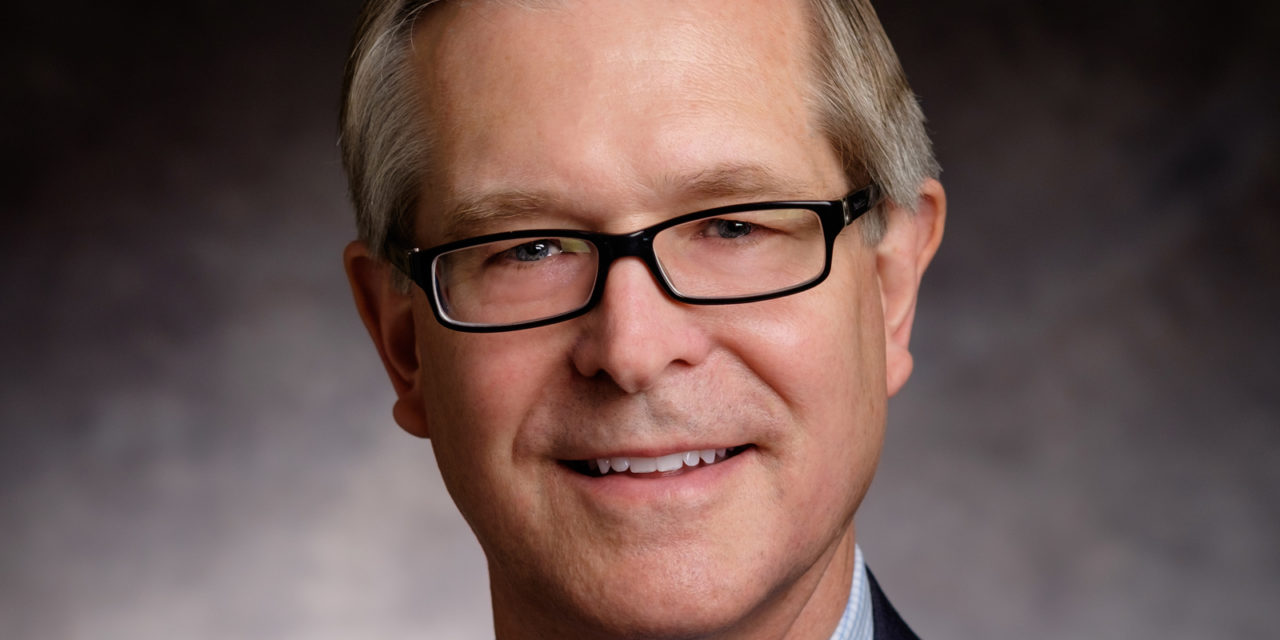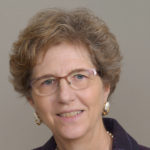
On the Record with Dr. John Raymond, Medical College of Wisconsin President and CEO

All photos courtesy of the Medical College of Wisconsin and are from Friday’s white coat ceremony.
The first students at the Medical College of Wisconsin Pharmacy School are set to begin class Monday.
The school, which MCW announced it planned to pursue in fall 2014, is the third pharmacy school in the state.
That’s not the only major development to come out of MCW in recent weeks. The college, along with the University of Wisconsin School of Medicine and Public Health and five other medical schools, has launched a network that aims to change the way they teach future physicians.
MCW CEO Dr. John Raymond recently spoke to Wisconsin Health News about the developments. Edited excerpts are below.
WHN: Now that the pharmacy school has received its pre-candidate status for accreditation, what are the next steps?
JR: I think we’re very pleased to have pre-candidate status. I want to give credit to our founding dean of the School of Pharmacy, who’s only been here 21 months – he went from being hired to having a pre-candidate accredited school of pharmacy in 21 months – and also to the great hires he made of the faculty and staff to really be the people who brought this vision to fruition. This was one of the goals I wanted to accomplish when I took the job as president in 2010. There are many reasons for that. Most importantly, healthcare is changing. We see expanding roles for non-physician providers across the full spectrum of healthcare. Also as an educator, we as a freestanding medical school struggle to find interprofessional education opportunities for our medical and graduate students. So being able to bring a pharmacy school here and to have the medical, pharmacy and graduate students work together from the very first phase of their education and training is something that we think is incredibly important in terms of providing the competencies that these students will need as they transition into practice.
We did have 51 students who gave deposits and all 51 showed up for orientation on Monday. They were very excited. Our next milestone is a white coat ceremony that is a traditional induction into the profession that’s going to happen this Friday. Our classes start next Monday.
We’ll be full candidate status as we move forward. You can’t be fully accredited until you graduate your first class. We do have a three-year curriculum, so we’re hoping that three years from now we’ll be able to be fully accredited.

WHN: How is your program going to be different than what’s offered in other pharmacy schools?
JR: I’ll use local examples. The University of Wisconsin School of Pharmacy is a very highly rated, extraordinarily well-respected, well-established pharmacy school that’s based on the scientific tradition. They have a very traditional curriculum. The Concordia University Wisconsin School of Pharmacy also is very traditional. Their focus is on training practicing pharmacists. They do it through a very traditional curriculum model.
MCW would like to take advantage of the permissive legislation in Wisconsin that allows pharmacists to do any task delegated to them by a physician. We’d like to have the pharmacy students comfortable working side by side with medical students and also be comfortable doing tasks that traditionally are performed by primary care practitioners – physicians, nurse practitioners and physician assistants – but to do those in retail pharmacy settings so we can make healthcare less expensive and more easily accessible to people right in the neighborhoods that they live in. For example, our students will learn in the same classroom and teaching settings with medical students – with pharmacy and medical school faculty teaching side by side – how to do a physical examination. Pharmacists will call that a physical assessment. So if a patient walks into a pharmacy and wants to be treated symptomatically for an upper respiratory tract infection, the pharmacists can take out their stethoscope, come from behind the counter and do auscultation of the heart and lungs to make sure that the patient doesn’t have heart failure. They will also be able to administer certain types of chronic disease management such as collaborating with an ophthalmologist using non-dilated retinal photography to do teleophthalmology. Or they can manage diabetes by performing diabetic foot examinations. Then if there’s a problem with a diabetic foot ulcer, they can do appropriate triage or referral to the appropriate provider. Whether that’s a physician or a nurse practitioner or a physician assistant would depend on the setting. Even though our pharmacy legislation allows those types of activities to occur in this state, there really isn’t a pathway for pharmacists to be trained and to feel comfortable with performing those types of tasks.
WHN: Why did MCW pursue a three-year program rather than a four-year program?
JR: This was a decision by the founding faculty and the dean of the School of Pharmacy. I’m personally comfortable with either curriculum. I think the thinking was that we would try to keep the student debt burden down by offering a three-year option. That saves the student a year of tuition burden and living expenses and gives them an extra year of work during their career if they’re capable of going through. Or it gives the students an extra year to pursue specialty training. This is one of the reasons why we chose to have the program embedded here on the Milwaukee campus. Because of the outstanding healthcare partners we have here at the Milwaukee Regional Medical Center campus, we can offer specialty training in pediatrics, personalized pharmacology and personalized medicine, oncology, behavioral health and provide a research track that we wouldn’t necessarily be able to provide if we did this at our Green Bay or Wausau campuses.
WHN: There are two other pharmacy schools in the state. Are you concerned about duplicating their efforts or creating a surplus of pharmacy graduates in the state?
JR: There are ongoing debates about the healthcare workforce, particularly in pharmacy. What we’ve observed is that Wisconsin, at least at this time, does not have a projected surplus of pharmacists even with the addition of our school. That may not be the same situation that we have in other states. But we’re talking about training a different kind of pharmacist who can provide more contemporary roles across the healthcare spectrum. So I personally don’t have any concerns whatsoever about creating a surplus of this type of pharmacist. I actually believe that our graduates are going to be in very high demand both in terms of the hospital-based specialty pharmacy care and in being pharmacists that can practice general pharmacy in retail pharmacy settings.

WHN: When MCW announced its intention to launch the school, it cited a maldistribution of pharmacists in underserved areas of the state. Do you still see that as an issue and how does the school plan to address that?
JR: We do see there remains a significant maldistribution of pharmacists in the state of Wisconsin, which reflects a general maldistribution of all types of healthcare providers across the state. The northern parts of the state are underrepresented in terms of their healthcare. Just from talking to our hospital partners in Wausau and northeastern Wisconsin, we believe that there really isn’t a good solution to addressing their workforce needs. What I believe is that the model that we’re teaching here at MCW where pharmacists will feel comfortable laying hands and a stethoscope on patients will be very attractive for the types of students that want to participate in community-based, pharmacy-based delivery of healthcare. That certainly can happen in the northern parts of the state where pharmacists I believe would be welcomed with open arms and be able to participate in that level in the delivery of healthcare.
WHN: Could basing the school in Milwaukee hinder efforts to address that maldistribution?
JR: We had quite a few discussions about being a good citizen of the state of Wisconsin in addressing the workforce needs. But the pharmacy accrediting body wants you to start and play to your strengths. So we’re starting in Milwaukee. We will have the option for our students to rotate in the northern part of the state using our medical school campuses somewhat as a base camp for them. We do hope that if this model is successful and we achieve full accreditation three years from now that we’ll be able to approach the Accreditation Council for Pharmacy Education and propose having rurally based programs.
WHN: In the past, you’ve been interested in opening up additional schools focused on other health professions. Are you considering any other programs or schools?
JR: Yes, we are. We’re very committed to addressing all healthcare workforce needs in the state. We have a tremendous asset on the Milwaukee Regional Medical Center campus with world-class health system partners and an outstanding medical school. We do have the bandwidth and the capacity to train other disciplines. At this time, we’re engaged in a feasibility study to apply for a P.A. program. We’re also examining the potential for physical therapy, occupational therapy, speech, pathology, audiology, genetic counseling, and we would certainly consider other opportunities that fit within our capabilities in here and don’t saturate the bandwidth that we have for accommodating other trainees on this campus. And whatever we do is going to be informed by our healthcare partners. Here in Milwaukee, the main healthcare partners would be Froedtert Health, Children’s Hospital of Wisconsin and the Milwaukee VA medical center. But we’ll certainly reach out to other health systems in the region. We do collaborative work with Aurora and Ascension hospitals. We have a long history of partnership with ProHealth Care. Then I would add if we’re thinking about maldistribution of the healthcare workforce, we certainly would ask our partners in Green Bay and central Wisconsin what would be of the most value to them.

WHN: Switching gears, MCW recently launched the Robert D. and Patricia E. Kern Foundation Institute for the Transformation of Medical Education. What’s the goal of this initiative and why is it needed?
JR: There’s a lot of pressure in medicine right now to increase productivity, so we don’t have as much time to spend with patients, and to use digital technologies, including the electronic health record, which may dehumanize the interaction of medical providers and other healthcare disciplines with patients. We like to partner with other highly ranked medical schools to try and address the issues of humanism and character in medicine in an organized way that isn’t simply idiosyncratic to one institution. We have seven medical schools that have already been working together for at least three years that are committed to working on the problem of humanism in medicine. We’re using a framework called the Triple Aim of Medical Education, and that’s caring, character and competence. Obviously we want to continue to focus on the science and art of medicine but to also focus on developing character in the practitioners of medicine and to make sure that they have a human touch.
WHN: How do you envision that working?
JR: Funding just started in July, so we don’t know all the answers to that, especially when you’re working with six other partners. But we do have pillars. We want to change the way we deliver education and that’s going to involve helping our faculty think about education in a different way and giving them the skills that are required for that. We may be looking at different ways to assess medical students during the admissions process and to nurture elements that aren’t measurable by the MCAT or their grade point average. These might be resilience, compassion, collaboration, communication skills. Believe it or not, there aren’t very good tools available to measure those attributes. This network and the current institute will try to develop and validate those types of tools. We also want to change the curriculum to incorporate more contemporary elements of healthcare education. Things are changing. We’re going to have artificial intelligence that’s interdigitated with the diagnostic array of tests that we have right now. Our students are going to need to be comfortable with that. So the curriculum is going to have to change. And, finally, culture. Medical education has remained fairly static since 1910 when Flexner published his report that was based on site visits to all North American medical schools. Traditionally, it’s two years of pre-clinical education and then two years of clinical apprenticeship before you can graduate from medical school. There’s a revolution right now in thinking about how to do that. It’s very hard for faculty that are comfortable with the traditional lecture-type of teaching arrangement to have small group interactions, to use electronic techniques and to focus on context rather than content. So we do need to deal with cultural issues. People like to do what they’re comfortable with. And our faculty and institutions – we’re going to have to be uncomfortable a little bit if we’re going to change the way we deliver education.
WHN: What are the next steps involved in the initiative?
JR: We have two representatives from each of the seven medical schools that meet twice a month by telephone. We’ve had many face-to-face meetings over the last three years. We’re beginning to co-sponsor a number of activities that will raise awareness about the issue, make people understand that there’s momentum building. So one example is early next year the University of California, San Francisco and MCW are going to co-sponsor a faculty development workshop in San Francisco that will help faculty understand what these issues are and how we might change our curriculum and teaching approaches to incorporate character into the curriculum. We’re also going to be having a kick-off event at the Association of American Medical Colleges meeting in Boston this November. We’re going to have a number of very visible activities. One will be at a session that’ll be open to talk about character. We’ll have a number of other medical schools participate. Throughout the course of the next year we’re going to be working with the AAMC to try to refine this conversation about character and to bring new partners into the fold.
This article first appeared in the Wisconsin Health News daily email newsletter. Sign up for your free trial here.





